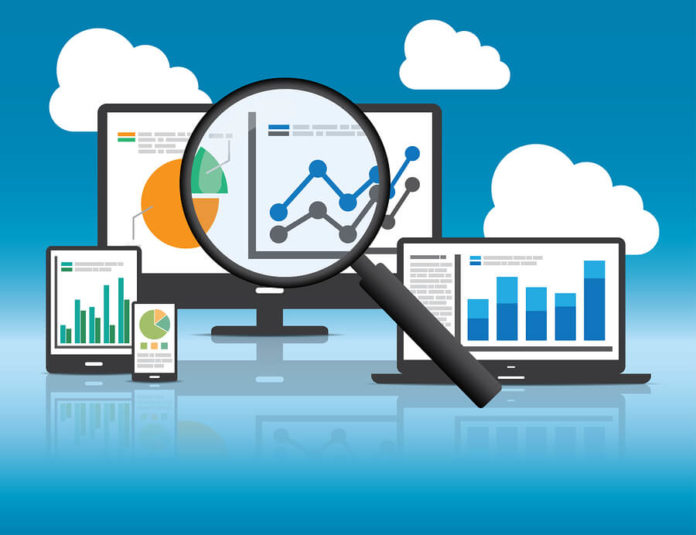The marketing world has evolved rapidly in the last decade. It’s a running joke among digital marketers that as soon as you master a marketing technique, it’s already irrelevant. A new technique has emerged that you must learn to stay relevant. While there is some truth to the volatility of digital marketing, there are some things that have appeared that aren’t going anywhere.
One of those things is the advent of big data and data analytics and its application towards marketing initiatives. Before the internet and before internet data collection, marketing was all guesswork. It was about throwing all the ideas against the wall and seeing what stuck.
Of course, there was the ability to track physical campaigns like direct mail and tv ads with tracked phone numbers. However, internet advertising, traffic, customers, and behavior weren’t trackable, so marketing initiatives were all a gamble. However, once data collection and analytics became part of the equation, the world of analytics opened up, and the entire digital marketing network changed.
What Are the Marketing Benefits of Data Analytics?
Data allows us to track everything from the behavior of website visitors to the effectiveness of our social media ad campaigns. Data analytics is simply the analysis of collected data. This analysis helps digital marketers to:
- Identify the most profitable marketing channels
- Know a company’s strengths and weaknesses
- Recognize and capitalize on marketing opportunities
- Locate the highest converting ads and media
- Identify an ideal target demographic
These are just a few of the ways in which digital marketers use data analytics to strengthen their marketing campaigns. There isn’t a marketing software out there that doesn’t have deep data integration available. From Google Analytics to MailChimp, to Facebook ads, and more, software companies know and appreciate the fundamental need for more in-depth data analytics.
Additional Benefits of Data Analytics
While digital marketing benefits from more significant insights, data analytics benefit more than just marketing executives. Research shows that data analytics can improve an entire company’s pipeline from beginning to end.
Data analytics allows an unparalleled oversight into customer experience and customer relations. Data analytics can provide meaningful financial, performance, and behavioral insight. Additionally, studies have shown that an investment in data and data analytics results in reduced costs and increased revenues, so ultimately, higher profits.
For business owners, executives, and marketers alike, data allows the ability to identify and track trends. This insight is like being able to predict your business’s future accurately. For a marketer, that means the ability to better predict which marketing initiatives will be successful. It’s no secret that the turnover rate of CMOs is notoriously high. This is because marketing is volatile and unpredictable, but with data analytics, marketing initiatives become less risky and more fact-based.
Data analytics have also been shown to reduce internal fraud and mitigate security risks. Furthermore, data can help in delivering relevant products and ensuring that all your clients or customers are receiving the personalization and service they deserve.
Overall, data analytics, both from a marketing perspective and a business perspective, is an indisputable asset. However, it’s not as simple as just flipping a switch. Utilizing data and data analytics can be complicated.
Integrating Data Analytics
All of these benefits sound wonderful, but when you pan out, you’re probably left with a big question mark. How do you get started with data analytics? The term “big data” is intimidating enough, knowing how to collect and dissect it is a whole different story.
Essentially, it boils down to very simple steps. Step one is all about collecting the data. Step two is about analyzing the data. Step three is about using that analysis to make quantifiable changes within your organization or marketing pipeline. Now, the most straightforward way to begin utilizing data and data analytics is to choose a software that has deep insights and master those insights.
Take, for instance, Google Analytics. If you’ve ever used it before, you know it’s overwhelming the first time you open it. There are a seemingly endless number of tabs and figures that all mean something. Essentially, Google Analytics is a whole lot of data, and the analysis comes in understanding it all.
However, data and data analytics doesn’t begin and end with Google. There are countless software solutions out there to strengthen your insight. This is where analytics consulting companies come into the picture. They’re experts at collecting and analyzing data. So, if getting started with data analytics is intimidating, hire an expert or a consultant. However, if it’s not within the budget, there are several free resources online to get you started.











![Extratorrents Is Down : Here Are The Best Alternatives To Extratorrent Top 14 ExtraTorrent Alternatives + 12 Mirror Sites [Updated 2020]](https://www.todaytechmedia.com/wp-content/uploads/2020/02/featured-100x70.jpg)